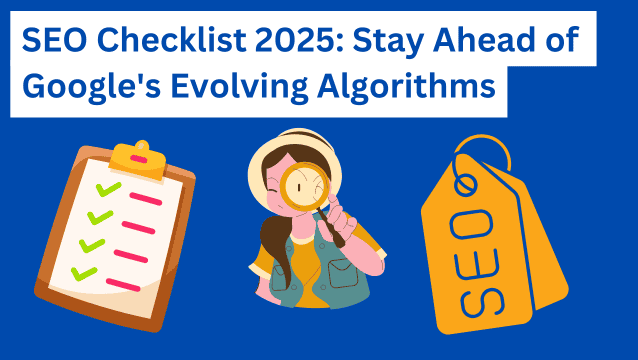You hear a lot about “data-driven” content in marketing. Often, data journalism examples refer to analytics derived from consumer interactions with web pages, marketing assets, and ad campaigns.
If you are really proactive, this may also include gathering customer data from surveys, product demos, and social media profiles.
But what if you’re not thinking big enough?
What if the world of data extends far beyond your in-house metrics and offers access to an interested global audience?
This is what data journalism is all about—using extensive data sets to craft compelling narratives.
Good stories form the foundation of good marketing, and data offers stories in droves. But marketers underutilize its potential.
This is good news for you—it gives you a competitive edge while other marketers still have their heads buried in endless Google Analytics dashboards.
You must understand a few basics to make data journalism work for you. We will explore them all and get you started crafting data-driven journalism of your own.
What is data journalism?
In the pedantic sense, data journalism is just journalism with a fancy prefix. Functionally, however, data journalism is more broadly focused on the statistics, analysis, and numerical trends behind a story.
Good data journalism pieces include effective, simple, and easy-to-understand graphics that condense a mountain of information so the average consumer can understand what they mean.
Even better, some data journalism visuals include interactive elements, such as clicking on specific aspects of a graphic to get more information, zoom-in features of geographic visuals, customizable inputs, and similar.
Number and metrics counters (like the ones pictured below) are compelling interactive visuals often used as webpage banners and in email campaigns to count toward a special sale or giveaway.
It’s not hard to imagine how narrative data presented visually like this benefits marketers, but let’s look even closer at why data journalism matters.
Why data journalism matters for marketers
Data journalism doesn’t just look cool. It also makes your life easier in several ways.
1. Takes the guesswork out of ideation
According to Search Engine Journal, ideation is among the top three challenges marketers face in 2024. An ever-flowing content pipeline requires ideas to fuel it, and many marketing teams are running dry.
When working with data, however, the story comes in a moldable chunk of factually verified clay. Your job is to sculpt the story.
With the numbers forming a blueprint for you, ideation becomes easy—the facts are already before your eyes.
2. Builds trust
By definition, content based on data is evidence-based. In a world where anyone can post anything on the World Wide Web and claim it is an unadulterated truth, trust is hard to gain and easy to lose. Trust in your content grows when your marketing efforts are evidence-based and—even better—verifiable.
3. Easily shareable and digestible
Since data journalism includes so many visuals, the potential for boosting engagement is enormous. Graphics are easily shareable, which means they can reach a much wider audience than the pool you usually target.
Plus, data that tells a story is evocative. The human urge to comment is seldom more prevalent than when presented with data that proves or disproves your viewpoint.
4 Stories are memorable
People remember stories. That’s why they’re so effective in marketing. Everyone remembers the warm glow they felt as a child watching the Coca-Cola Christmas commercials.
It wasn’t about Coke. It was the broader story of warmth, happiness, excitement, and now, looking back, the nostalgia of being young. That’s a story. And a very effective one.
Data may not be as stunning as Santa’s red suit, but it’s every bit as effective if used correctly. The Quarterly Journal of Economics published a study in June 2024 that found the impact of statistics on beliefs faded by 73% in a single day. Comparatively, the impact of stories faded by only 32%.
The takeaway is this: facts are important.
Facts give us a foundation for belief, trust, and plans for the future. But facts alone aren’t going to stick in the human heart or, as the above study proves, the mind.
Use data journalism to find the human story. Then tell it with truth.
Data journalism examples
Let’s look at data journalism examples from two different sectors.
Political data journalism examples
Election maps are a type of data journalism that is particularly interesting to many right now, as we are in the middle of an election race.
538’s interactive polling statistics, shown in the screenshot below, serve as an excellent example of data journalism.
These forecasting models condense an enormous amount of data and present it to the public in an easily understandable format. Any user can sift through the data and interact with it, gaining an understanding of a complex topic quickly.
538 also provides textual breakdowns of the data you are viewing, explains how they analyzed it and outlines what the forecasting predicts.
Let’s look at another example.
The news outlet CNBC published a piece on inflation based on the Consumer Price Index from the Bureau of Labor Statistics.
This piece of data journalism breaks down the key takeaways at the top of the piece so that readers can grab the gist of the data quickly.
It also includes interactive graphs and textual explanations to help readers understand what they see.
This is a good example of data journalism because it demonstrates how to present the parts of data that most people care about the most. In this case, it shows how much the price of everyday goods and services has risen, which informs people on how their day-to-day lives will be affected.
Cultural data journalism examples
Cultural data journalism is a segment of data journalism you’ve heard about all your life. Box office figures and top 10 song lists are all compiled with data. The entire entertainment industry determines success by how high movies and songs rank on these lists. How are these rankings determined? You guessed it: data.
Outlets like TheWrap offer rankings and reviews but also deep-dives into the data behind projects that are soaring in popularity. They also go deep on the entertainment business as a whole, writing intelligent pieces on the entertainment machine and the movers and shakers behind it.
The Billboard Charts for music began in 1913 by publishing the top 10 best-selling pieces of sheet music. As they tracked more data, the list evolved, first publishing the most popular pop songs by record sales in 1936.
Since then, it has become the metric for success in the music industry, with nearly every music outlet reporting on where a record falls on the Billboard Top 100. And it’s all about data!
How to begin creating data journalism
So, what does this mean for you? How can you start creating your own data-driven journalism?
Here are four beginning steps to get you started.
Collect your data
The cornerstone of any piece of data journalism is, of course, its data. Any piece of data journalism you create starts here.
There are two places to start looking for data pools: the public sector and the private sector.
Public Sector
The public has access to a lot of data. Government websites like the Bureau of Labor Statistics provide niche and detailed data. Searching Data.gov is also effective, allowing you to search over 295,000 federally compiled data sets.
Additionally, you can Google “data release calendar,” and the search results will give you a list of all the publications scheduled to release new data reports.
This is an excellent way to mine data and ensure that your data journalism is timely. The news world moves fast, and you must publish while data is still relevant.
Screenshot provided by author
Pro tip: Try Googling *your industry* + “data release calendar.” Stats and reports that are most relevant to your company and product will appear.
Private Sector
Private sector data comes from your own company or companies within your industry that you have surveyed.
Hubspot has published many examples of data journalism based on private data. They often poll their users to get large, comprehensive studies on marketing. People in the industry then engage with this content, share it, and link to it, creating a robust feedback loop for Hubspot’s content.
You can do this too. Your initial data set may not be as large as Hubspot’s, but you will likely have access to more customer data than you realize.
Start compiling data from these sources:
- Billing & payment systems
- Refunds and returns data
- Email campaign software
- Customer testimonials
- Social media posts
- Customer surveys
- Google Analytics
- Sales team data
- Blog comments
- Chatbot data
- CRM systems
- Heat maps
Find the story
Finding the story in data may come from the data itself, but it can also come from other stories that have already hit the news.
For instance, imagine you’re a cybersecurity company and news of a large data leak surfaces.
You have the opportunity to create a piece of data journalism that displays national statistics on data leaks, showing how many people experience data breaches annually and the outcomes for those who take extra precautions with their data versus those who do not.
After using data to make the case for tight cyber security and capitalizing on the emotional environment of the trending news story, you’ve aligned yourself perfectly to pitch your service as a solution to the problem.
But all of this comes from finding the story in the first place. This is where that journalist’s “sixth sense” comes in handy. A news story isn’t always just a story—sometimes there’s more to tell. You just have to dig a little deeper.
Choose a format
The format you choose determines the overall experience of your presenting data.
When selecting your format, remember these key things:
- Your goal is comprehension—keep it simple
- Remember shareability—visuals and interactive graphics are easily shared and engaged with
- You’re creating a story, not just sharing facts
- Play to your strengths; don’t reinvent the wheel
That last point is important. If you don’t have a team member to create intricate data models, you don’t necessarily need to go and hire one. For example, an animator or videographer can also make a fantastic piece of data journalism.
A graphic designer is also skilled at visual design. Even writers can use plug-and-play programs if they know what data to input.
Keep your expectations reasonable within what you can already do, and don’t worry about being everything to everybody—the story will be just as effective.
Refine and replicate
Once you understand how to build a good piece of data journalism, build a pipeline and keep refining.
For instance, build a system for in-house data collection and communication channels between your sales and marketing teams so crucial data doesn’t slip through the cracks.
Build an accessible repository of client information that is easy to filter and understand.
Once you’ve built your systems and published data journalism pieces regularly, ensure you track performance metrics and adjust as necessary.
Statistics are quickly outdated, so update them regularly. Make this a part of your pipeline from the beginning so you don’t become known for unreliable information in your interactive data stories.
Let data do the talking
Data isn’t merely a collection of “fun facts” to regurgitate at dinner parties. Data is an integral part of culture, politics, and business. And it’s increasingly important for marketers to take it seriously.
At a time when many consumers feel cynical about the authenticity of any sort of journalism, marketing assets built on data are evidence-based and verifiable, building trust. Moreover, data helps eliminate some significant challenges for marketers, like perpetual ideation to keep content pipelines afloat.
Remember, data wrapped in a compelling narrative helps cement your brand in the minds of your audience. Statistics are easily forgotten, but a compelling story has staying power.
Begin delving into data from the public sector and within your own company, and let it guide you toward your first incredible piece of data journalism.
Now that you’re well-versed in data journalism examples, do you need help with data-driven journalism at scale? Book a call with uSERP. We have the perfect SEO content writing plan for your needs.
Time to invest in your content strategy today. You won’t regret it.


